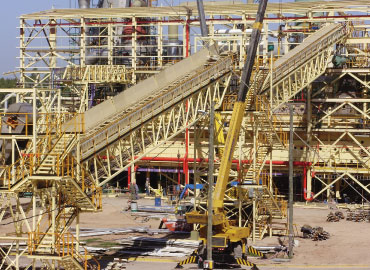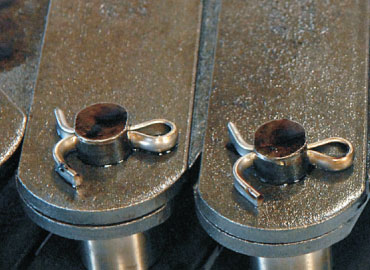
We look after our purchasers' satisfaction. We encourage team work and assure efficiency and seriousness during the pre-selling, production and post-selling stages. Metalmax is in constant growth, we work day by day in order to optimize our resources. Our goal is to become the leading brand among all of our competitors.

We aim to achieve leadership in chains' and conveyors' design and manufacture in Argentina. Thus, we intend to grow in the international business as well as in the local one, using the latest technologies and designs in order to achieve first level products.

Chains for handling, scraper or En-masse.

Chains for power transmission between sprockets within a drive system. High Fatigue Resistance Design.

Chains designed for highly demanding conditions, using a safety 10 times its workload. Manufactured from special Steel Alloy, and Heat Treated to achieve superior mechanical properties.

Chains for maximun power system. Highly reliable silent chain transmissions.

Chains for bulk material coveying. Optimun performance in corrosive and abrasive environments. Forged links are manufactured in highly refined steel alloy and with a maximun mechanical resistence to abrasion and corrosion. Optional stainless steel series 900 pins for special environments, also in medium steel carbon and stainless steel series 300.

Chains specially designed for the sugar mill industry. Pins and bushes manufactured in chrome alloy steel, providing an optimun performance for this environment.

Mass Chains Coveyors "J" Type: Chains designed for heavy applications with high strength and low maintenance cost. Designed up to 90º. Extremely precise fabrication on each piece with UHMW paddles and abrasive resistant liners; head and boot access covers.

Supplied in cast iron, cast steel, toothed or friction drive, segmented and with wear resistant surfaces.

Manufactured in high resistence steel for coveying in wide range of applications. Designed for rugged, long term use.

Chains WHX Type.


This type of links, which we described in each elbow-linked chain, can be used in all kind of chains in cases in which their length counts on an odd number of steps. This practice is not always recommendable since every command should be - if possible – designed with a setting that assures an even number of steps. This will lengthen the chains' useful life. Only when an odd number of steps are inevitable, it is recommendable to use a double-elbowed-link chain. Half link, on the other hand, must be used only as an extreme solution and last resource.

For an accurate production process, it should always be possible to classify it into one of the four hypothetical cases shown in Figures 1 to 4, in which the formula corresponding to Ta (Average tensile strength) measured in Kg., can easily determinate the effort by making a tentative calculation. Coefficients: a1, a2, a3, a4 and f which are described in these formulas, are obtained from Tables I, II, III, IV and V, respectively. Once the value of Ta is calculated, the transportation chain's pre-selection can be easily made by checking on Graphics X and XI, depending on what it is required: If an ASA-Series-Chain is to be made, it will be required to choose the accurate number, entering Ta value and the speed. It is possible that various chains give a satisfying answer to the problem which is to be solved, - with the same weight of break- but with different passes and characteristics.

This are the ones described in Specifications BS and AS. They use the same pins, bushings and rollers that the short-pass-chains use. The main difference is that their inner and outer plates have double pass from short-pass-chains. Long-pass-chains are more economic and they are used particularly for low speed applications with wide distances between the centers, where a decrease in cost and weight can be significant.
